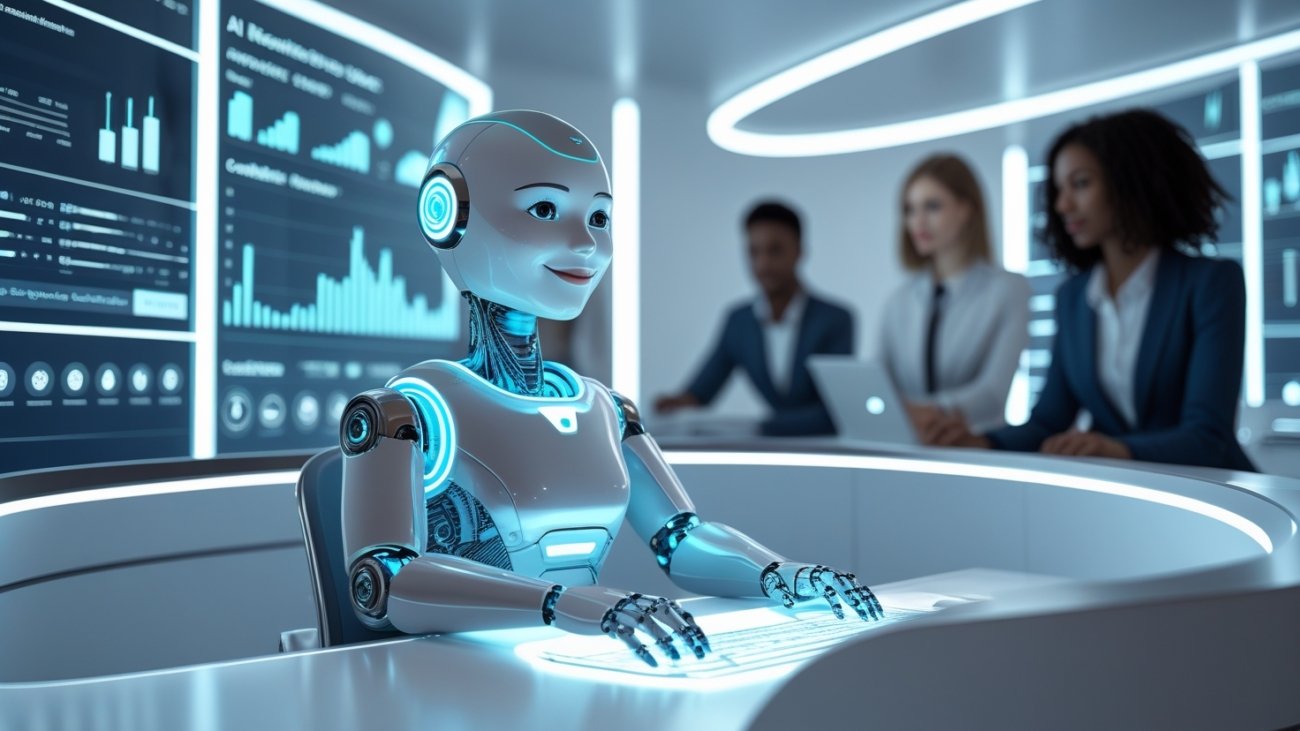
The recruitment landscape is undergoing a seismic shift, with artificial intelligence (AI) and automation redefining how HR professionals source, screen, and hire talent.
In 2025, the global HR technology market is valued at over $35 billion, with AI-driven tools leading the charge.
These innovations promise efficiency, bias reduction, and enhanced candidate experiences, but they also raise questions about ethics and human connection.
Step 1: Understanding AI’s Role in Recruitment
AI in recruitment automates repetitive tasks and enhances decision-making.
Tools like applicant tracking systems (ATS) powered by AI, such as Workable or Greenhouse, screen resumes 10 times faster than humans, analyzing keywords and qualifications with 90% accuracy.
AI chatbots, like Mya, engage candidates 24/7, answering FAQs and scheduling interviews, improving response times by 50%.
To get started, explore free demos of AI tools on platforms like Capterra.
Create a “Tech Map” using a tool like Canva to list AI recruitment tools and their functions (e.g., sourcing, screening).
This visual exercise helps you grasp the ecosystem and identify tools suited to your needs.
Interactive Task:
Search X for #HRTech and find a post about AI in recruitment.
Reply with a question like, “How has AI improved your hiring process?” to learn from real-world applications.
Key Insight:
Understanding AI’s capabilities sets the stage for strategic adoption.
Step 2: Streamlining Sourcing with Automation
Automation transforms candidate sourcing by tapping into vast talent pools.
AI platforms like LinkedIn Recruiter use algorithms to identify passive candidates based on skills and experience, expanding reach by 40%.
Experiment with free tools like Google’s Talent Solutions or Indeed’s resume search to practice automated sourcing.
Build a sample talent pipeline by searching for a role (e.g., “data analyst”) and noting how AI ranks candidates.
Interactive Task:
Create a mock job ad optimized for AI sourcing (e.g., using specific keywords) and post it on a job board simulator like Jobscan to test its ATS compatibility.
Key Insight:
Automation amplifies sourcing efficiency, but keyword optimization is critical.
Step 3: Enhancing Screening with AI
AI-driven screening tools, like Unilever’s HireVue, use natural language processing to evaluate resumes and video interviews, identifying top candidates with 85% precision.
Predictive analytics assess cultural fit by analyzing personality traits, reducing turnover by 20%.
However, beware of bias — AI trained on flawed data can perpetuate inequities.
Practice by uploading sample resumes to a free ATS like Zoho Recruit and analyzing how it ranks candidates.
Create a “Bias Checklist” to evaluate AI tools, noting factors like diverse training data or transparency in algorithms.
Interactive Task:
Simulate an AI screening process by scoring three sample resumes for a role using a rubric (skills, experience, fit).
Compare your scores to an ATS demo’s output.
Key Insight:
AI screening boosts efficiency but requires oversight to ensure fairness.
Step 4: Improving Candidate Experience
AI enhances candidate experience through personalization.
Chatbots provide real-time updates, while tools like Textio craft inclusive job descriptions, increasing applications from underrepresented groups by 25%.
Automation also enables tailored feedback, with platforms like Paradox sending personalized rejection emails, boosting candidate satisfaction by 30%.
Design a chatbot script for a fictional company using a free tool like Landbot.
Test it by role-playing as a candidate, then refine based on clarity and tone.
Interactive Task:
Write a sample AI-generated rejection email that’s empathetic and constructive, then ask for peer reviews on an HR forum like HR.com.
Key Insight:
AI-driven personalization strengthens candidate relationships and brand reputation.
Step 5: Navigating Ethical Challenges
AI’s potential comes with ethical pitfalls.
Overreliance on algorithms can dehumanize recruitment, and biased data can exclude qualified candidates.
A 2024 study found 60% of HR leaders worry about AI ethics.
Mitigate risks by auditing AI tools regularly, ensuring compliance with laws like GDPR or EEOC guidelines.
Create an “Ethics Playbook” outlining steps to monitor AI bias (e.g., regular data audits, diverse hiring panels).
Join X discussions on #HREthics to learn how companies address these challenges.
Stay informed via SHRM’s AI ethics webinars.
Interactive Task:
Draft a one-page AI ethics policy for a fictional company and share it on X with #HREthics for critique.
Key Insight:
Ethical AI use builds trust and ensures equitable hiring.
Step 6: Continuous Learning and Integration
The future of HR demands continuous learning.
Stay updated with resources like HR Technology Review or Gartner’s HR Tech reports.
Experiment with integrating AI into existing processes, like combining Workday with an AI chatbot for seamless workflows.
Join virtual HR tech summits to network with innovators.
Reflect monthly on your AI adoption progress by journaling successes and challenges.
Consider certifications like SHRM’s HR Technology badge to deepen expertise.
Interactive Task:
Attend a free HR tech webinar and post a 280-character summary on X with #HRFuture, highlighting one AI trend.
Key Insight:
Lifelong learning and strategic integration keep HR pros ahead in an AI-driven world.
Shaping the Future of Recruitment
AI and automation are revolutionizing recruitment, offering speed, scale, and personalization — but only if used thoughtfully.
By mastering these tools and staying human-centric, you’ll shape a future where technology enhances, not replaces, the art of hiring.

